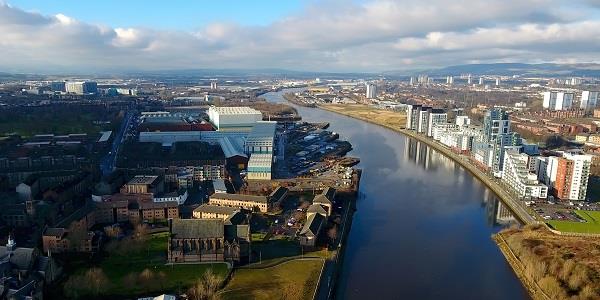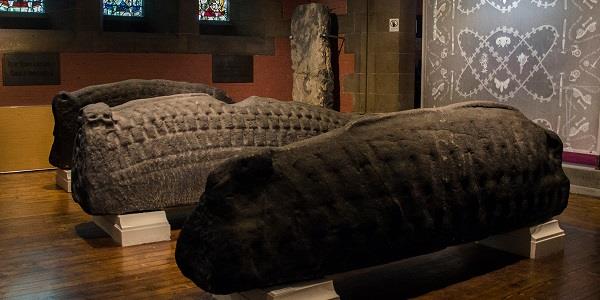
If you’re holidaying at Tigh Mor Trossachs at any time of year, you have a wealth of attractions to choose from: lochs, mountains, fabulous walks, clean clear air, glorious views, and chances galore to commune with nature.
A trip to Govan (at top) may sound like an odd recommendation, then. A working town, an ‘adjunct’ to Glasgow; all sooty bricks and fire-belching furnaces. A place of hard graft and heavy industry. Of textile mills, of coal mining. Of shipbuilding.
(And, interestingly, the birthplace of a disproportionate number of managers who’ve left their mark on the upper levels of the English Football League: Sir Alex Ferguson, Paul Lambert, Sir Kenny Dalglish, and more. There’s surely a dissertation to be written on why this should be so; but I’m not the person to write it.)
These days, industrial Govan has largely been consigned to history, one of many victims of changing economic imperatives. Large-scale gentrification, however, has yet to take hold; the area still has a reputation for deprivation and poverty.

But Govan – or, more precisely, Govan Old Parish Church (above) – boasts a history of its own that is much, much older. The church – known locally as Govan Old – is nothing less than an archaeological treasurehouse, whose artefacts lie waiting to be discovered by the general public. In 2019, all being well.
At the heart of Govan Old is the story of over 1,500 years of Scottish Christian worship and ecclesiastical and political influence. And forming a backbone to that narrative is – or are – the Govan Stones (below), a collection of 31 recumbent gravestones and hogback stones, plus a sarcophagus, believed to date from the 10th and 11th Centuries.

The next few months will decide if what some describe as “Glasgow’s best-kept secret” is allowed to tell its story in full; a fundraising drive is underway to turn Govan Old into a major visitor attraction, with the Viking Age carvings as a centrepiece.
The existing A-listed Victorian building (possibly the sixth church to have been built on the site), Govan Old was saved 10 years ago after the Church of Scotland, in effect, decommissioned it. Informal services still take place there, and the congregation is part of the trust behind the move to turn the church into a museum and heritage centre.
“Govan has had a bad press over the years,” said Pat Cassidy of the Govan Heritage Trust. “Shipyards brought with them development but also huge social problems. This early medieval past has just been swept under the carpet and forgotten about.
“We don’t know why the story of this place is not known the length and breadth of the land,” he continued. “Govan Old and this site are on a par with Iona and St Andrews [as regards Christian heritage]. We want people to find out about it.
“We believe we can turn the reputation of Govan on its head using this national asset.”

